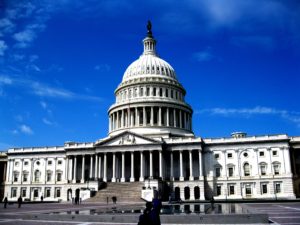
The Princeton Review recently released its 2016 College Hopes & Worries survey, and, not surprisingly, money dominated the worries list. While students cited their future debt load as the top concern, following closely behind is the fear of getting into their top choice … only to find that they can’t afford it.
In fact, almost 9 in 10 college hopefuls said in the survey that financial aid will be “very” or “extremely” necessary to pay for college.
In a politically tumultuous year, lawmakers are uniting behind bipartisan higher ed legislation aimed at addressing many challenges, including financial aid. One key bill up for consideration in the House addresses the Free Application for Federal Student Aid (FAFSA), long known to be confusing and time-consuming. The Simplifying the Application for Student Aid Act seeks to make FAFSA more user-friendly. It would require that the application be available via mobile app, and all versions – print and digital – would need to be consumer tested for ease of use. That’s not particularly contentious.
However, this act also would help put into practice an executive order allowing students to use income data from two years prior for FAFSA. This measure – also referred to as prior-prior year or PPY – is intended to give students more time to submit their application earlier and administrators more time to verify the income data. The ultimate goal is to better inform students about their aid options, in a timely manner, allowing them to plan more effectively.
Achieving this goal will require most colleges and universities to solve a number of significant challenges. An accelerated financial aid application timetable. A longer yield period for admissions. Complications around individual state policies and procedures for awarding aid.
Regardless of this legislation’s fate, there will be many more curveballs for colleges and universities – and students and families – in the coming years. Everyone in the higher education community will experience unprecedented change in order to adapt, survive and (hopefully) thrive in the 21st century.
We have to do something. Earning a degree has never come with such a financial strain attached. And, as the nontraditional student population continues to grow, so will the importance of affordability. The question is how to best balance student needs and what’s realistic for universities.
We’d love to hear from our higher ed partners and friends – what do you think about the proposed legislation? How are you approaching financial aid challenges and other upcoming changes? Let us know your thoughts in the comments.
